If you have pet mice, it’s essential to know what to feed your tiny pets. After all, good health starts with a balanced diet. But it can be hard to sort through all of the misinformation about feeding pet mice and the low-quality products that are available to find the best food for mice.
Here’s a straightforward guide to what are, in our opinion, the best mouse foods that you can buy today. For more information about the dietary requirements of mice, visit What to Feed Your Pet Mice: A Comprehensive Guide.
Note: This guide is exclusively for pet fancy mice. Harvest mice may have other nutritional needs, and the foods listed here may not be appropriate for them
What Do Mice Eat in the Wild?
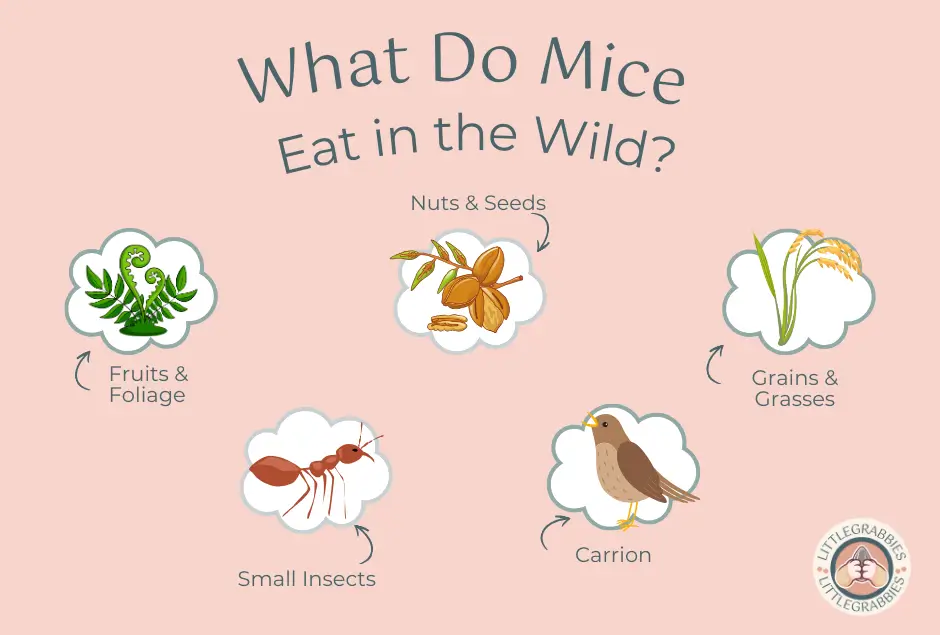
First, it’s important to look at what mice would normally eat in the wild. Their natural diet is, for the most part, what you should try to emulate in captivity.
Mice are what’s known as “opportunistic omnivores.” This means that they survive by eating a broad mix of plants, as well as small insects and even carrion.
What they eat in the wild depends on where specific mice happen to live. But generally, they’ll live off a mix of seeds, nuts, grasses, plants, and insects.
What Nutrition Do Pet Mice Need?
The nutrients and vitamins that pet mice need are similar to what other small animals require. They need an adequate amount of protein, carbohydrates, fiber, fat, and various vitamins and minerals.
Proteins should come from sources like meat, insects, or eggs, while carbohydrates and fiber can be found in grains or vegetables. Fats can come from vegetable oils or nuts. Essential vitamins and minerals can be found in fortified foods or supplements.
Crude nutrients (crude protein, crude fiber, and crude fat) are the total amounts of those nutrients present in a food, regardless of how they’re digested. That means that depending on the type of animal, they may be absorbing and digesting only a portion of any particular nutrient.
Here are the dietary requirements of mice in terms of crude nutrients:
Crude protein: 12% – 14%
Crude fat: 5% – 8%
Crude fiber: 10% or less
What is the Best Commercial Mouse Food?
Many mouse owners prefer to create their own food for their pet mice. This is often done by adapting the Shunamite diet, which is designed for rats, to the needs of a mouse.
However, this requires a great deal of attention to detail and thorough research. It may not be possible for you to do this, at least not all the time. For those times when you’d prefer to purchase commercially available food for your mice, rest assured that there are some good options out there.
Here are our choices for commercial mouse food, including both lab blocks (pellets) and seed mixes.
Lab blocks for pet mice
Lab blocks or pelleted food should typically be a staple of your pet mouse’s diet. However, these should also be supplemented with seeds, fresh foods, dried insects, and other treats.
When you’re choosing lab blocks or pellets for your pet mice, the most important factor to look at is the amount of protein. Most lab blocks have too much protein for mice, which can lead to health problems.
Here are our recommended lab blocks and pellets for mice:
Teklad Global Rat Food Pellets 2014
Crude protein: 14%
Crude fat: 4%
Crude fiber: 4.1%
Teklad Global Rat Food in the 2014 formulation is a great option for mice because it’s extremely consistent in the nutrients it provides.
One thing to keep in mind with this food, however, is that Envigo (the company that produces this food) primarily supplies laboratories that experiment on mice and other animals. So if you are against supporting that kind of business, there are other options available.
Oxbow Essentials Adult Rat Food
Crude protein: 15%
Crude fat: 4%
Crude fiber: 2% – 5%
Oxbow can be hit or miss when it comes to small pet food, but in this case, the Essentials Adult Rat Food is a “hit” for mice. It covers all of their nutrient requirements with minimal fat.
Keep in mind that only this specific food by Oxbow is appropriate for mice. Other Oxbow formulas are made with excessive hay products that aren’t nutritiously suitable for mice.
This pellet formula is high in protein, but only slightly. It’s our opinion that a 1-2% difference in protein does not make much of a difference to a mouse’s diet.
Science Selective Complete Rat and Mouse
Crude protein: 12%
Crude fat: 2%
Crude fiber: 5.5%
Science Selective is another great pellet product for mice, with a balanced nutrient profile. This pellet formula is just slightly lower in protein than the others on this list, which means you may choose to supplement your mice’s diet with additional low-fat protein sources. This can include unseasoned, cooked chicken, turkey, or shrimp.
Seed mixes for pet mice
A high-quality seed mix is a vital part of your mouse’s diet, too. A seed mix doesn’t need to be fed daily like lab blocks, and many mouse owners recommend avoiding this.
That’s because seed mixes tend to be higher in fat, and mice will pick out the high-fat pieces and leave out the parts they don’t like. That means they’re not getting the full nutritional benefits of the food mix.
Instead, it’s recommended to give your pet mouse a seed mix scattered around their cage two to three times per week.
Here are our recommended seed mixes for pet mice.
Higgins Sunburst Gourmet Food Mix For Hamsters And Gerbils
Crude protein: 15%
Crude fat: 7%
Crude fiber: 9.5%
Higgins Sunburst is a favorite commercial choice for many mouse owners, as well as hamster and gerbil owners. It’s a well-rounded seed mix that contains a mix of seeds and various other plant sources.
What Other Foods Can Pet Mice Eat?
Every mouse has their own favorite treat, and it’s up to you to figure out what that treat is! A small treat can be given once per day, or a couple of small pieces every other day.
Give fresh fruits and vegetables sparingly because these can cause stomach upset and diarrhea, and fruits are high in sugar.
Whenever you introduce a new food to your mouse, make sure to monitor them and their stool to make sure it’s not upsetting their stomach.
Here are some ideas of treats you can try with your pet mice:
- Cooked, unseasoned chicken or turkey
- Unseasoned, hard-boiled or scrambled egg
- Crickets
- Mealworms
- Baby carrots
- Cucumber
- Broccoli
- Bell pepper
- Cauliflower
- Celery
- Lettuce
- Dandelion greens
- Parsley
- Cooked sweet potatoes
- Pumpkin seeds
- Sunflower seeds
- Blueberries
- Apple
- Grapes
- Banana
- Oats
- Puffed rice
- Unsweetened cereal
- Millet spray
- Whole-grain bread or crackers
- Cooked or uncooked pasta
This is by no means a complete list of healthy treats for pet mice. Try out other foods, as long as they’re free from artificial flavors, added sweeteners, or artificial colors (and aren’t listed in the section below).
What Foods Should You Avoid with Pet Mice?
Because mice can eat so many different things, you might be wondering what they can’t eat.
Here are the foods you’ll need to avoid giving your mice for their safety. These foods can be toxic or dangerous for mice:
- Candy or sweetened foods
- Spicy food
- Raw meat
- Potatoes
- Raw sweet potato
- Rhubarb
- Onion
- Garlic
- Avocados
- Apple seeds
- Citrus fruits
- Mango
- Artificially colored food and pellets
Good Mouse Health Starts with Good Nutrition
Feeding your mice isn’t complicated, but it’s easy to make missteps along the way. With so many unsuitable foods for mice available in pet stores, it’s understandable that you could end up with a pellet food, snack product, or seed mix that isn’t right for your pet.
What’s important is to consistently strive to update your care and provide the right nutrition to your mice. Doing so can help your mouse live a longer, healthier life and help avoid problems like diabetes.
For more information about mouse nutritional needs, such as how much to feed your mice, visit our complete nutritional guidelines for mice.


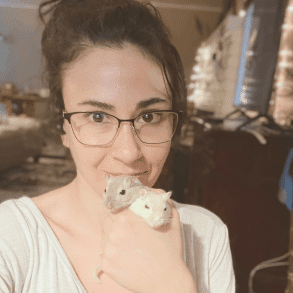

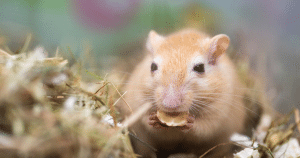
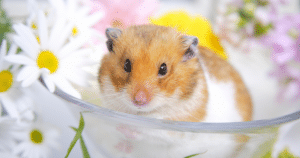
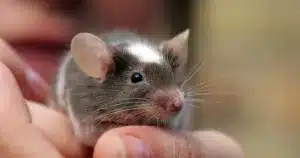
0 Comments